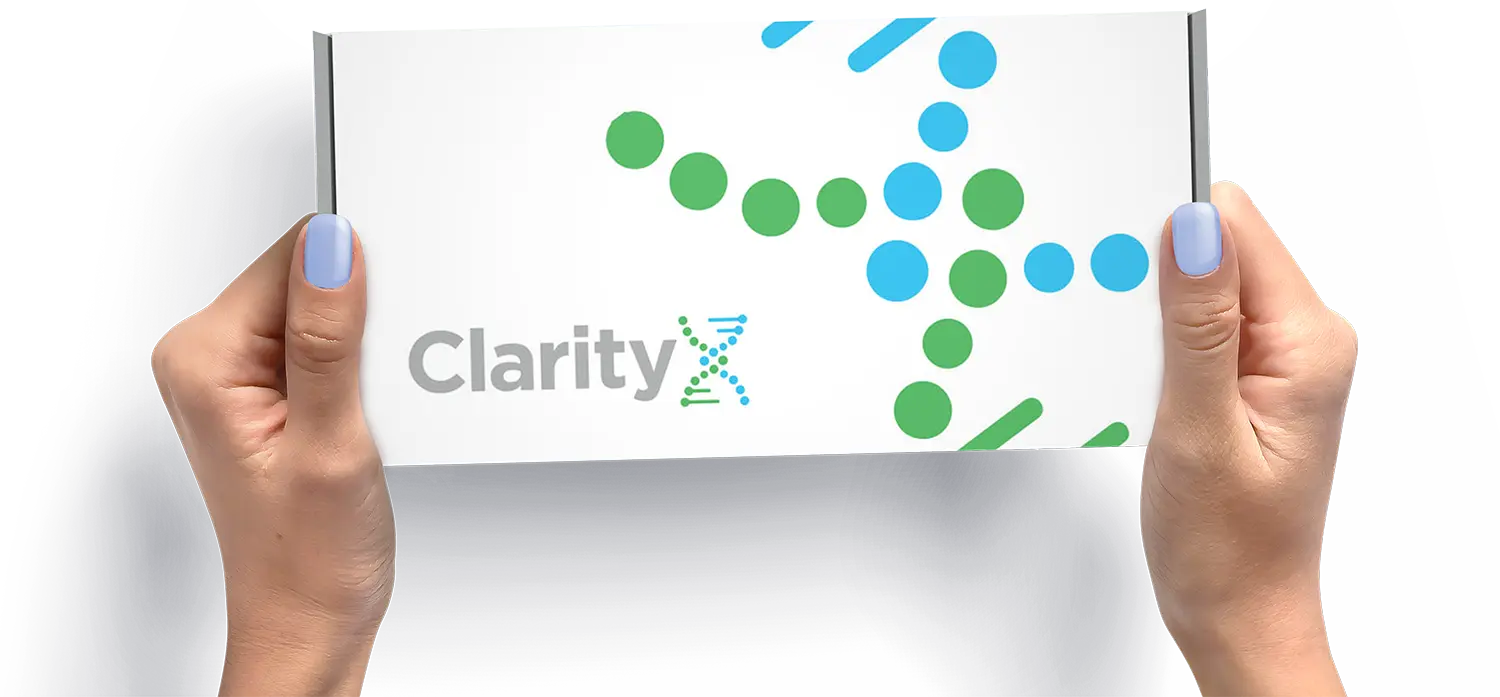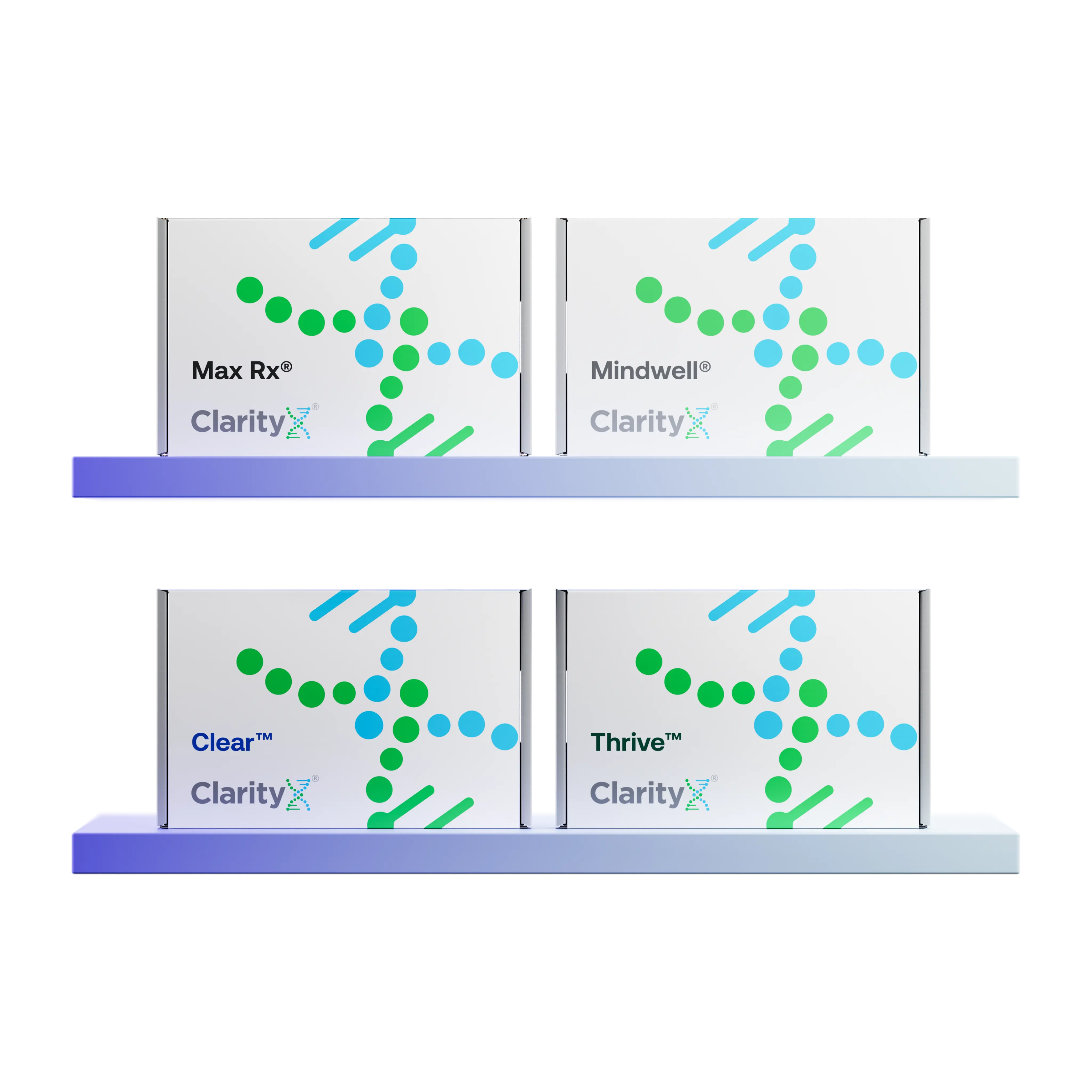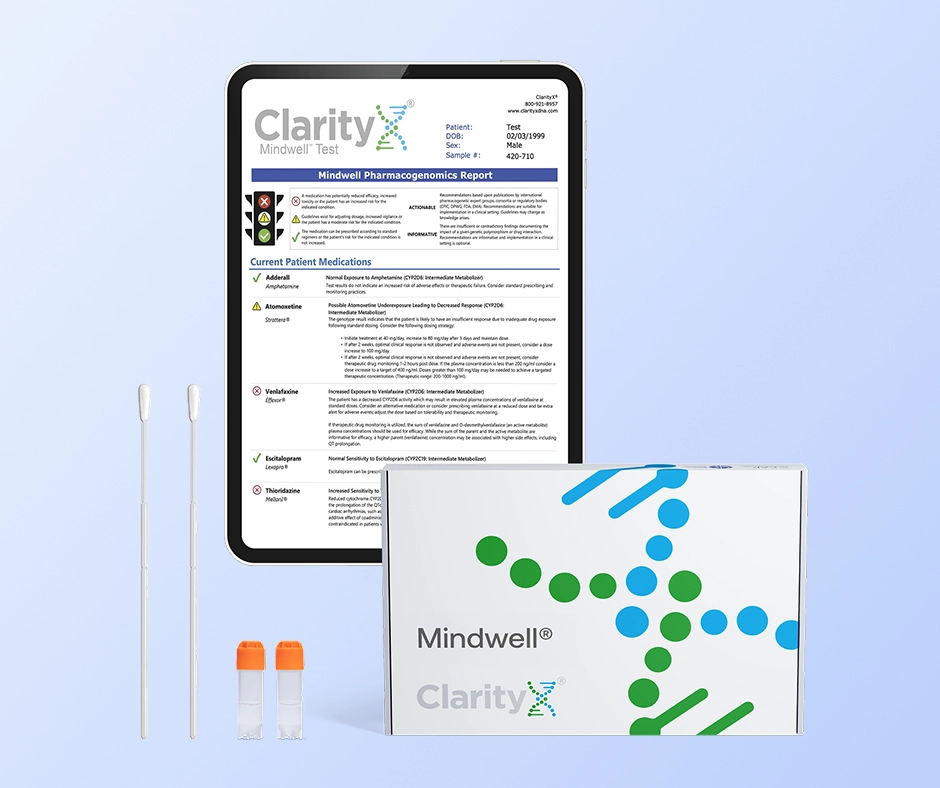Key Highlights
Here are the key takeaways about the early warning signs of depression:
- Understanding the symptoms of depression is the first step toward better mental health.
- Depressive symptoms go beyond sadness and can include physical and behavioral changes.
- Several types of mental disorders exist, each with unique signs, from major depression to seasonal affective disorder.
- It's important to recognize the difference between temporary sadness and persistent depressive symptoms.
- Knowing the warning signs helps you understand when to seek professional help.
- Effective treatment options are available to help you manage your mental health.
Introduction
Feeling down from time to time is a normal part of life, but what happens when that feeling of sadness doesn't go away? Depression is one of the most common mental disorders in the United States, affecting how you feel, think, and handle daily activities. Recognizing the early signs is crucial for your long-term mental health. This guide will walk you through the key symptoms, help you understand the condition, and show you when it’s time to seek support.
Understanding Depression
Depression is more than just a passing bad mood. It's a serious and common mental health condition that can impact every part of your life. While it can feel isolating, it's important to remember that you are not alone and that help is available.
Understanding what depression is, the different forms it can take, and its risk factors can empower you to take the right steps. Let's explore the specifics of this condition to build a clearer picture.
What Is Depression?
So, what exactly is depression? At its core, depression is a mood disorder that causes a persistent feeling of sadness and a loss of interest in activities you once enjoyed. Unlike grieving or reacting to a difficult life event, this depressed mood sticks around nearly every day for at least two weeks. This mental illness can affect your sleep, appetite, memory, and ability to think clearly.
Among mental health conditions, depression is one of the most common. Major depression, also known as clinical depression, is the most severe form. The most common symptoms include a constant low mood, feeling hopeless or worthless, having low energy, and experiencing trouble with concentration.
It's a genuine medical condition, not a sign of weakness, and it requires care just like any physical illness. Without treatment, it can worsen, but the good news is that therapies and medications are highly effective for most people.
Types of Depression Disorders
Depression isn't a one-size-fits-all condition. The American Psychiatric Association outlines several distinct types, each with its own characteristics. Understanding these can help clarify what you or a loved one might be experiencing.
Some of the most recognized types of depression disorders include:
- Major Depressive Disorder (MDD): This is what most people mean when they say "clinical depression." It involves intense symptoms that last for at least two weeks.
- Persistent Depressive Disorder (PDD): Previously called dysthymia, this is a milder but more chronic form of depression, lasting for at least two years.
- Seasonal Affective Disorder (SAD): This type of depression is linked to the changing seasons, typically starting in the fall and winter.
- Premenstrual Dysphoric Disorder (PMDD): This involves severe mood symptoms, irritability, and anxiety that occur in the week before menstruation.
It's also worth noting that people with bipolar disorder experience episodes of depression. Recognizing the specific type of depression is a key step toward finding the right treatment.
Who Is at Risk for Depression ?
Depression can affect anyone, regardless of age, gender, or background. In the United States, researchers estimate that more than 1 in 6 adults will experience depression at some point. However, certain risk factors can increase your likelihood of developing the condition.
A family history of depression is a significant factor; if a parent or sibling has it, your risk is about three times higher. Stressful life events, trauma, isolation, and lack of support can also trigger depression. Chronic medical conditions and certain medications can be contributing factors as well.
Here are some of the key risk factors associated with depression:
Recognizing Early Symptoms of Depression
Recognizing the early signs of depression is vital for getting timely help and preventing symptoms from worsening. These indicators are not always obvious and can manifest in your emotions, your body, and your behavior. Being aware of these changes in yourself or a loved one is the first step toward addressing these mental health conditions.
Let's break down the different kinds of symptoms you should watch for, from emotional shifts to physical complaints and changes in your daily habits.
Emotional and Psychological Signs
The emotional toll is often the most well-known aspect of depression. These depressive symptoms go far beyond simple feelings of sadness and can feel overwhelming and persistent. You might find yourself stuck in a cycle of negative thoughts that are hard to break.
These psychological signs can include feelings of worthlessness, hopelessness, or excessive guilt. For some, especially children and teens, irritability and frustration may be more prominent than sadness. It's the persistence of these feelings that signals a deeper issue.
Common emotional and psychological symptoms include:
- A pervasive feeling of sadness or an "empty" mood
- Feeling hopeless or pessimistic
- Irritability or frustration, even over small things
- Feelings of worthlessness or guilt
- Difficulty concentrating, remembering, or making decisions
Physical Symptoms Linked to Depression
Did you know that depression can show up in your body? Many people are surprised to learn that physical symptoms are a common part of this mental health condition. Persistent fatigue that doesn't improve with rest is one of the most frequent complaints.
You might also experience unexplained aches and pains, such as headaches, cramps, or stomachaches, that don't have a clear physical cause. These physical manifestations are very real and can be just as disruptive as the emotional symptoms. Sometimes, these health conditions are the first or only signs of depression a person notices.
Here are some physical symptoms to be aware of:
- Persistent fatigue or low energy
- Changes in sleep, like insomnia or sleeping too much
- Changes in appetite, leading to weight loss or weight gain
- Unexplained physical issues like chronic pain, headaches, or digestive problems
Changes in Behavior and Daily Routines
A mood disorder like depression can significantly alter your behavior and disrupt your daily activities. One of the most telling signs is a loss of interest or pleasure in hobbies and activities you once loved, from spending time with friends to pursuing your favorite pastime.
This lack of motivation can make it difficult to perform even basic tasks at work or at home. You might start to withdraw from family and friends, preferring to be alone. These behavioral changes are not a choice but a direct result of how depression affects आपका brain and energy levels.
Look for these shifts in behavior:
- Loss of interest in hobbies, social events, or other daily activities
- Withdrawing from friends and family
- Increased use of alcohol or drugs
- Difficulty completing tasks at work, school, or home
Sadness vs. Depression: Knowing the Difference
Everyone feels sad sometimes; it's a natural human response to loss or disappointment. However, there's a significant difference between sadness and the clinical condition of depression. While sadness is temporary and usually tied to a specific event, a depressed mood is persistent and pervasive.
Understanding this distinction is key to recognizing when your feelings might be part of a larger issue. The following sections will help you compare temporary sadness to depressive symptoms and explain why depression can exist even without sadness.
Comparing Typical Sadness to Depressive Symptoms
How can you tell if what you're feeling is sadness or something more? The main differences are duration, intensity, and the number of symptoms. Feelings of sadness are typically fleeting and related to a specific trigger. In contrast, a major depressive episode involves a depressed mood that lasts for at least two weeks.
With depression, the low feeling is often accompanied by other symptoms that affect your ability to function. Unlike sadness, where you can still enjoy some things, depression often involves a complete loss of interest and pleasure.
Here’s a quick comparison:
- Duration: Sadness is temporary, while a depressed mood in mental disorders persists for weeks or longer.
- Cause: Sadness is often a reaction to a specific event. Depression can occur without any clear reason.
- Functioning: You can usually carry on with daily life when you're sad. Depression can make it difficult to work, sleep, or eat.
- Other Symptoms: Depression includes other signs like fatigue, feelings of worthlessness, and physical aches.
Why Depression Can Occur Without Feeling Sad
It's a common misconception that depression always looks like overwhelming sadness. In reality, this mental illness can manifest in many different ways, and some people with depression don't report feeling sad at all. This is due to a variety of psychological factors and individual differences.
Instead of sadness, you might feel empty, numb, or emotionally flat. For others, especially men, depression can present as anger, irritability, or aggression. They may act out or engage in risky behaviors as a way of coping with their internal turmoil.
In children and teenagers, irritability is often a more prominent symptom than a low mood. Recognizing that depression doesn't always involve tears or sadness is crucial for identifying the condition in yourself and others who might be struggling silently.
Lesser-Known or Hidden Signs of Depression
Not all depressive symptoms are as obvious as crying or staying in bed all day. Many hidden symptoms of depression can be easily mistaken for stress, fatigue, or even a personality trait. This is why it's so important to pay attention to subtle shifts in your mental health and well-being.
These lesser-known signs can be just as impactful and are often the earliest indicators that something is wrong. Let's uncover some of the subtle symptoms you might overlook and discuss the impact of social withdrawal.
Subtle Symptoms You Might Overlook
Many of depression's subtle symptoms can fly under the radar. For instance, you might find yourself becoming easily irritated or frustrated over minor issues. This increased irritability can strain relationships and be a key, yet overlooked, sign of an underlying mood issue.
Another subtle sign is a change in your decision-making ability. If you suddenly find it difficult to concentrate or make choices you used to handle easily, it could be linked to depression. These cognitive changes can be just as debilitating as the emotional ones. Other health conditions and physical changes can also be signs.
Look out for these subtle symptoms:
- Increased irritability or frustration
- Difficulty concentrating or making decisions
- Noticeable weight gain or loss due to appetite changes
- Significant sleep changes, such as sleeping much more or less than usual
Social Withdrawal and Loss of Interest
Pulling away from friends, family, and social gatherings is a classic but often misinterpreted sign of depression. You might mistake this social withdrawal for introversion or simply being busy, but it's frequently driven by the loss of energy and interest that accompanies mental disorders. The effort to socialize can feel completely overwhelming.
This loss of interest, known as anhedonia, also applies to hobbies and activities that used to bring you joy. When you no longer care about your favorite sports team, gardening, or weekend projects, it's a significant red flag for your mental health.
This symptom isn't about being bored; it's a profound inability to feel pleasure. It's one of the core criteria for diagnosing depression and a sign you should not ignore.
How Depression Symptoms Vary Among Individuals
Depression is not a uniform experience. The symptoms of depression can appear very differently from one person to another due to individual differences in biology, life experience, and personality. What one person experiences as deep sadness, another might feel as intense irritability or complete emotional numbness.
These variations are why it's so important to look at the whole picture. Factors like age, gender, and even culture can shape how mental health conditions manifest, as we'll explore next.
Symptom Differences by Age Group (Teens vs. Adults)
Depressive symptoms can change significantly with age. What depression looks like in teens is often quite different from how it appears in adults or older adults. Recognizing these age-specific signs is key to providing the right support for your loved ones' mental health.
In teenagers, for example, irritability, anger, and acting out are more common than overt sadness. They might sleep excessively or perform poorly in school. Adults, on the other hand, are more likely to experience the "classic" symptoms of a low mood and loss of pleasure. In older adults, symptoms can be less obvious and may be mistaken for other medical conditions or a normal part of aging.
Here's a look at some common differences:
Gender-Based Symptom Presentation
Do men and women experience depression differently? Research and clinical observation suggest they do. These gender differences in how depressive symptoms are expressed can affect how mental health conditions are recognized and treated.
Women are more likely to experience and express classic symptoms like persistent sadness, feelings of worthlessness, and guilt. Hormonal changes related to menstruation, pregnancy, and menopause can also play a role in women's higher rates of diagnosed depression.
In contrast, men may be less likely to show sadness. Instead, their depression might manifest as anger, irritability, or aggressive behavior. They may also be more likely to turn to substance use or throw themselves into their work to cope. These different coping mechanisms can sometimes mask the underlying depression, making it harder to spot.
Cultural and Lifestyle Influences
Your culture and lifestyle also play a role in how you experience and express depression. Cultural factors can influence which symptoms are more prominent and whether you feel comfortable seeking help. In some cultures, discussing emotional pain is stigmatized, so people may be more likely to report physical symptoms like headaches or fatigue.
Your lifestyle choices are also significant risk factors. A lack of social support, isolation, and experiencing highly stressful events can trigger or worsen depression. Similarly, substance use, including alcohol, can cause depression or make it more severe.
On the other hand, a healthy lifestyle can be protective. Regular exercise, a balanced diet, a consistent sleep routine, and strong social connections can help reduce your risk and manage symptoms.
When to Seek Help for Depression
Knowing when to reach out for help is one of the most important steps you can take. If symptoms of depression are interfering with your relationships, work, or ability to enjoy life, it's time to talk to a professional. Depression is one of the most treatable mental health conditions, and effective treatment options are available.
From talk therapy to medication, a health care provider can help you find the right path. Never hesitate to seek mental health treatment. If you or someone you know is in immediate danger, contact a crisis lifeline right away.
Personalizing Your Treatment Path with Pharmacogenetics
Seeking help is the most important step, and as mentioned, effective treatments like therapy and medication are available. For many, the medication path is a critical part of recovery. However, this is often where a new, frustrating challenge begins: the "trial-and-error" process.
You might try an antidepressant, wait 4-6 weeks to see if it works, only to be met with difficult side effects or no relief at all. This cycle can repeat, causing you to lose hope. But this isn't a personal failure, it's a genetic one, and it's a problem that can now be solved.
This is where the science of pharmacogenetics (PGx) provides a powerful solution.
Pharmacogenetic testing analyzes your unique DNA through a simple, painless cheek swab to help predict how your body will respond to specific medications. A ClarityX Mindwell® test analyzes the key genes that control how your body metabolizes and responds to antidepressants and anti-anxiety medications.
Genetic testing for depression , can for example, determine if you are a:
- "Poor Metabolizer": You process a specific drug very slowly. A standard dose could build up in your system and lead to a high risk of side effects.
- "Ultra-Rapid Metabolizer": You process a specific drug so quickly that it may be cleared from your body before it has a chance to work, leading to treatment failure.
By providing this data-driven report to your healthcare provider, you can help them move beyond guesswork. It empowers your doctor to select a medication that is a better genetic fit for your body from the start, leading to a faster, safer, and more effective.
Warning Signs Requiring Professional Attention
Certain warning signs indicate that it's time to seek professional mental health services immediately. If you are experiencing severe depression, it's crucial not to wait. Any mention of suicidal thoughts or thoughts of death should be taken seriously.
These symptoms signal that the depression has become severe and potentially life-threatening. The most important thing to do is to get help right away. It's a sign of strength, not weakness, to reach out.
Seek immediate help if you or someone you know experiences any of the following:
- Having thoughts of self-harm or suicide
- Expressing thoughts of death or dying
- Being unable to perform basic daily tasks like eating or hygiene
- Experiencing symptoms of psychosis, such as delusions or hallucinations
- Engaging in reckless or dangerous behavior
If you or a loved one are having these thoughts, call or text 988 to reach the Suicide and Crisis Lifeline. Someone is available to help 24/7.
Conclusion
Recognizing the early signs of depression is crucial for timely intervention and support. By understanding the various symptoms ranging from emotional and psychological indicators to subtle physical changes you can better help yourself or someone you care about. It’s important to remember that depression may present differently across individuals and age groups, emphasizing the need for a compassionate, tailored approach to mental health care. If you or someone you know is struggling, don't hesitate to reach out for professional help.
Frequently Asked Questions
Do depression symptoms affect sleep and appetite?
Yes, changes in sleep and appetite are classic symptoms of depression. This can manifest as insomnia or sleeping too much (hypersomnia). Similarly, you might experience a loss of appetite and weight loss, or an increased appetite and weight gain. These sleep changes and appetite changes are key indicators of many mental disorders.
Can physical symptoms like pain and fatigue signal depression?
Absolutely. Physical symptoms are a very real part of depression. Unexplained chronic pain, frequent headaches, digestive issues, and persistent fatigue that isn't relieved by rest can all be signs of a major depressive disorder. For some people, these physical issues are their primary complaint when seeking medical help.
How long do depression symptoms typically last?
For a diagnosis of a major depressive episode, depressive symptoms must be present nearly every day for at least two weeks. Without treatment, the duration of this mental illness can vary, with episodes lasting for several weeks or even months. Recognizing the persistence of these symptoms is key for addressing mental health conditions promptly.
References:
https://my.clevelandclinic.org/health/diseases/9292-persistent-depressive-disorder-pdd
https://www.nimh.nih.gov/health/publications/seasonal-affective-disorder
https://medlineplus.gov/ency/article/007193.htm
https://psychcentral.com/health/what-is-flat-affect
https://my.clevelandclinic.org/health/symptoms/25155-anhedonia
https://clarityxdna.com/blog/learn/pharmacogenetic-testing-unlocking-personalized-medicine/






